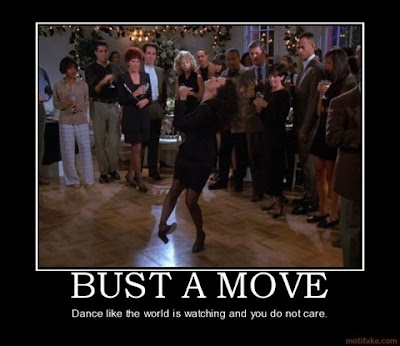Other than being a boat passenger, I have zero boating experience so I didn't have much idea of what specifics we'd be learning. I wasn't too concerned about potential seasickness, though I was a little nervous about those instances when the boat is heavily angled sideways. Beyond that, the only thing I knew to expect from sailing was that it could be a lot of work.
Lesson day arrived this past Tuesday. I donned my best sailing clothing (aka comfortable shorts and a t-shirt), a lifejacket, and sailing gloves, and hopped aboard a 30-foot Catalina sailboat named FINS. Here is a picture of FINS from the Go Sailing Chicago website:
Each class is limited to a maximum of four students, and during my lesson there were only three of us - myself, and two other guys. Captain Tom, our instructor for the night, got FINS off and moving right away. FINS has a backup motor, which he used until we cleared the harbor. He explained that boats operating without a motor have the right-of-way over motored boats, and during the time that FINS was utilizing its motor it was considered a motorboat.
Once we got out to open water, Captain Tom turned off the engine and the true experience began. He described each of the parts and functions of the sailboat, then shared details with us on wind direction and their impact on sailing direction, dropping the sails, etc. It was a hot, humid, and very blustery day - so right away we got to work releasing and trimming (adjusting) the sails. Captain Tom instructed us on the proper methods, and the work definitely required both speed and muscle.
Captain Tom initially gave his instructions by using the proper equipment names. Unfortunately, none of us could remember what the names represented, so Captain Tom quickly resorted to saying things like, "Tighten up the red line! Give the green line some slack!"
 |
| This isn't from the sailboat that I was aboard, but it's an example of some of the lines used to adjust the sails. |
We gradually worked our way to the lake area north of Navy Pier, where the waters and winds calmed down quite a bit. At this point, we were able to relax, take turns at the steering wheel (it was actually pretty easy), observe the boat's features in more detail, and chat.
We asked Captain Tom lots of questions about the sailboat's design and architecture, the sailing community, and his sailing experiences. He shared stories on the process of getting his captain's license, regattas such as the Race to Mackinac, boating etiquette, the Chicago Harbor Locks, sailing in inclement weather, and hosting sailing charters complete with wine and a grill. It was fascinating to hear about the science and the strategy behind sailing.
 |
| From a recent running of the Race to Mackinac |
Funny side story about the Race to Mackinac: A former coworker of mine named Eric is very involved in sailing, and has done this race several times. He told us that each sailboat has a GPS monitor during the race which enables folks back home to track location and progress. However, he mentioned that there were some signal dead zones. Therefore, if there was ever point at which their boat had seemingly disappeared off the radar screen, we shouldn't necessarily panic. (This is good to know.)
We saw plenty of other sailboats on the lake in the vicinity along the way. Captain Tom said he could tell just by looking at other sailboats whether or not the folks on board knew what they were doing based on the direction and/or tautness of their sails or other techniques.
As the sun set, the temperature cooled down. We got a very comfortable breeze off the lake with a gorgeous view of the nighttime Chicago skyline. It was incredibly peaceful and tranquil.
Captain Tom explained that at night, boats and the harbors had different-colored lights to help indicate direction. For example, on boats, there is a green light on the front right of the ship, a red light on the front left of the ship, and a white light on the rear of the ship.
As the lesson approached its end, we helped Captain Tom prepare the boat to re-enter the harbor. My hands were still burning from the exertion so it was nice to finish that off and then just enjoy the last few minutes of the sail.
This introductory sailing lesson was an amazing way to spend a Chicago summer evening. There was so much information to take in and I learned a LOT. It has made me truly understand how learning to sail can be an ongoing, lifelong process. Now, whenever I see sailboats out on the water, I am going to be more observant of things like the angles of their sails.
I obviously still have a LOT of learning to do about sailing before I can be dangerous! But this lesson has definitely deepened my appreciation for all that goes into sailing and why people love it.






































